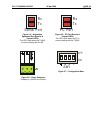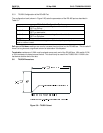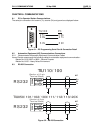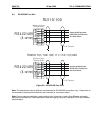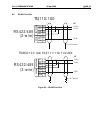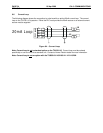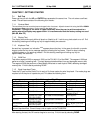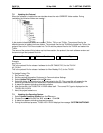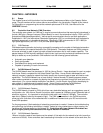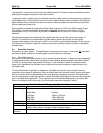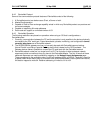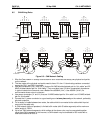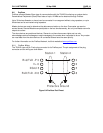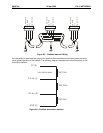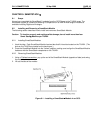
PAGE 38 06 Apr 2000 CH. 8: NETWORKS
GFK-1819
"self-arbitration" causes the controller with the greater Network ID number to cease broadcasting without
affecting the message-in-progress of the other controller.
In applications with a large number of networked controllers, better results may be achieved by assigning
lower Network IDs to controllers that have more critical network data than other controllers. By assigning
higher Network IDs to controllers that provide numerous network updates, the controllers are prevented
from monopolising the bus time.
Each controller is capable of broadcasting Global Digital Output bits (%QG) and Global Analog Output
bits (%AQG), which are periodically broadcasted to the other controllers on the network. The coil
representations %QG and %AQG may be used in CBREEZE like any other coil or internal register
reference.
All digital global outputs are broadcast to the network each time one of them has a state change. In
addition, if a controller has not transmitted its global data for specific time period, the controller's
programmable network timer may expire, which in turn results in a global data broadcast. Finally, as part
of its power-up initialisation sequence, another controller can explicitly request a controller to broadcast
its global data.
8.4 DeviceNet Overview
DeviceNet is an open network. The specification and the protocol are open. Vendors are not required to
purchase hardware, software or licensing rights to connect devices to a system.
8.4.1 DeviceNet Features
DeviceNet is a low-cost communications link to connect industrial devices. It allows the interchangeability
of simple devices while making interconnectivity of more complex devices possible. DeviceNet is based
on CAN. It is an application layer protocol (ISO layer 7) and is defined in terms of an abstract object
model, which represents the available communication services and the external visible behaviour of a
DeviceNet node.
The DeviceNet Model is application independent. DeviceNet provides the communication services
needed by various types of applications. Many of today's lower level industrial control devices must retain
their low cost/low resource characteristics even when directly connected to a network. DeviceNet takes
this into consideration by defining a specific instance of the DeviceNet Model for communications typically
seen in a Master/Slave application. This is referred to as the Predefined Master/Slave Connection Set.
Some of the features and functionality of the DeviceNet network are described Table 8.1.
Table 8.1 - DeviceNet Features and Functionality
Network Size Up to 64 Nodes
Network Length Selectable end-to end network distance varies with speed
Baud Rate Distance
125 Kbps 500m (1,640 feet)
250 Kbps 250m (820 feet)
500 Kbps 100m (328 feet)
Data Packets 0-8 bytes
Bus Topology Linear (trunkline/dropline); power and signal on the same network cable
Bus Addressing Peer-to-Peer with Multi-Cast (one-to-many); Multi-Master and Master/Slave
special case; polled or change-of-state (exception-based)
System
Features
Removal and replacement of devices from the network under power



